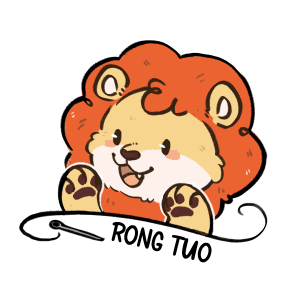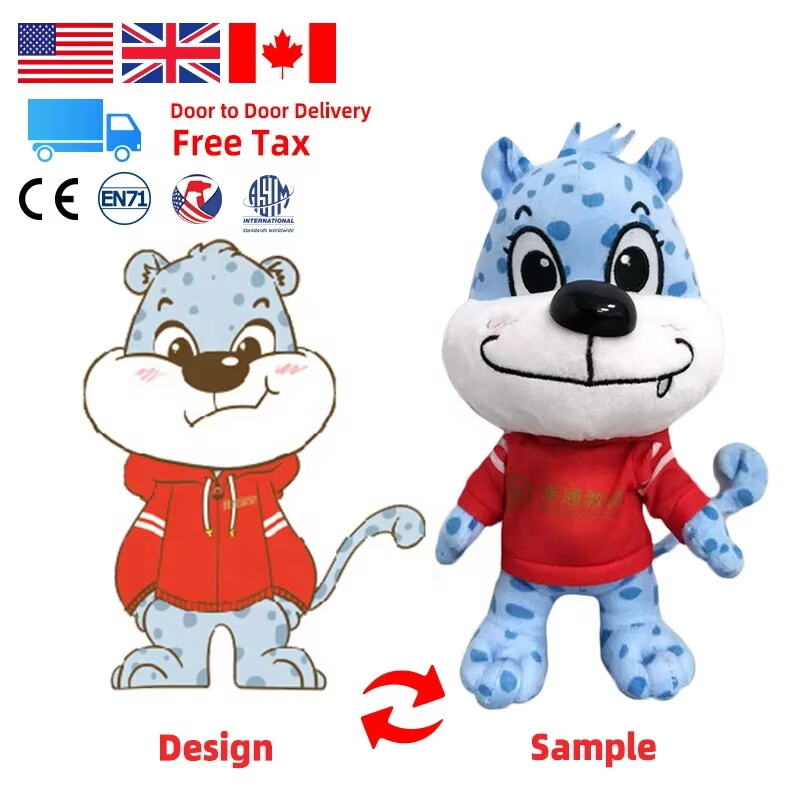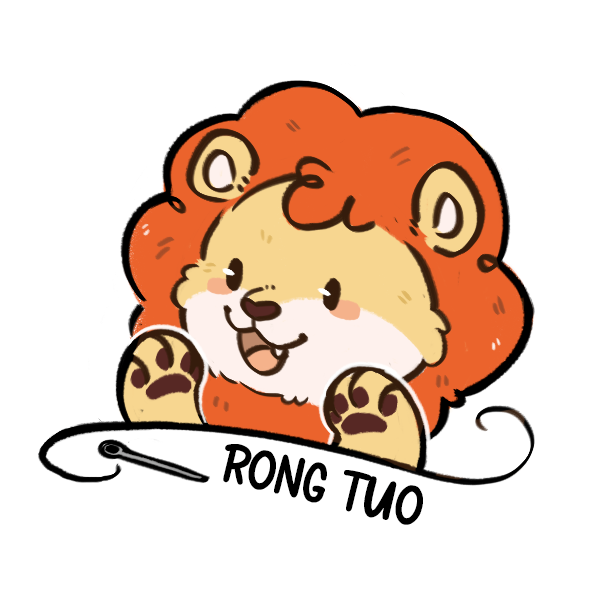Introduction to Sampling Costs in Plush Toy Production
Sampling costs take up a big chunk of what companies spend on plush toy manufacturing, typically happening well before they start making thousands of units. Money goes toward building those first sample plush toys that designers need to see if their ideas actually look good and hold up to quality checks. Manufacturers also run all sorts of tests during this phase to check how long the toys will last and whether they pass safety requirements for children's products. For anyone wanting to create unique plush items that customers will actually want to buy, these samples provide valuable feedback about what works and what needs fixing long before the factory gears up for full scale production.
Sampling is really important for maintaining product quality and keeping customers happy. When manufacturers get good samples, they can check how the toy looks and feels, make sure it meets all the required standards, and catch any problems before going into full production. Plush toy makers and stuffed animal suppliers rely heavily on this process to confirm their products will actually appeal to kids (or whoever the buyers are) while still passing all the necessary safety tests. The reason sampling often costs so much money is simple: without getting these details right first, there's no way to guarantee successful large scale manufacturing or that anyone will want to buy the finished product once it hits store shelves.
Complexity of Design and Its Impact on Sampling Costs
Detailed Designs and Customizations
When plush toys get too fancy with all sorts of custom touches, the cost to make sample versions goes way up. Creating these detailed prototypes takes extra work because they need special manufacturing methods and different fabric combinations. Take for example a basic stuffed animal that gets made in no time at all versus something with custom embroidered patches or unique stitching patterns. Those special features require much more hands-on work from skilled workers who know exactly what they're doing. Industry numbers show that making samples for customized plush toys can actually cost around 30 percent more than regular ones. That kind of price difference really matters when companies are trying to figure out their budgets for new product lines.
Unique Features and Their Cost Implications
Adding special features like interactive components, unusual materials, or fancy packaging makes things much more complicated and drives up sampling costs. Testing becomes absolutely necessary to make sure these extra bits work properly and are safe for consumers, which means spending more money on prototypes. Take plush toys with built-in sounds or LED lights for instance they need really detailed design work and engineering know-how, so creating samples takes longer and costs way more than standard items. All this extra complexity shows why good old fashioned planning matters so much when making custom plush toys based on pictures. Missing even small details during the design phase can lead to big surprises in the bottom line when it comes time to produce samples.
Material Selection and Its Role in High Sampling Costs
High-quality Fabrics and Stuffing
Choosing good quality fabrics and stuffing really affects how much it costs to make sample plush toys. Better materials look nicer and feel better when touched, but they definitely cost more money for those first samples. Most folks know that top notch materials just come at a higher price tag, so this naturally drives up what it takes to produce those initial prototypes. Plus, lately there's been a big push toward greener manufacturing across the board. A lot of plush makers now focus on using stuff like organic cotton or recycled polyester because parents want safer products for kids. These eco friendly options need to meet strict safety rules too. On average, switching to these materials adds around twenty percent to the material budget. And since more shoppers care about sustainability these days, we keep seeing prices go up for plush toys made with quality, environmentally conscious materials.
Safety Components and Their Expense
Adding safety features to plush toys definitely drives up sampling costs because of all the testing needed to comply with regulations. Things like safety eyes, extra strong stitching, and using materials that won't harm kids require plenty of checks before products hit store shelves. The main reason these safety elements matter so much is simple: parents want their children protected when playing with soft toys. Government agencies have strict rules in place too, which means manufacturers need to keep mountains of paperwork and follow every guideline carefully, something that adds to the bottom line. According to some studies in the field, putting safety first can bump up sampling expenses anywhere between 15% and maybe even 25%. Most toy makers see these added costs not just as necessary overhead but actually worth spending money on since it helps avoid legal problems down the road and builds brand loyalty among conscious consumers who care about what their kids play with.
Prototype Development and Associated Costs
Creating and Testing Prototypes
Creating and testing prototypes remains one of those essential but expensive parts of making plush toys. The whole thing starts with building each sample piece by piece, then going through round after round of tests to get everything just right. Manufacturers know this takes ages and burns through cash fast. Some companies report spending nearly half their sampling budget just on these early stages alone. And when designers need to tweak things several times over to hit those perfect specs while still pleasing customers? That's where costs really start climbing. Many small manufacturers tell stories about how unexpected changes in fabric choices or safety requirements can completely throw off their financial plans.
Quality and Safety Checks During Prototyping
When it comes to making plush toys, quality and safety testing really affects how much things cost during the prototype phase. These tests help make sure products actually follow safety rules and what customers want from their toys. Running all these tests means buying special machines and hiring people who know what they're doing, which naturally raises operating costs. Some recent market analysis suggests that just keeping up with quality control can bump sampling expenses anywhere between 10 to 15 percent. While this definitely adds to the bottom line, most manufacturers still see it as necessary work given all the environmental concerns and strict safety regulations that now apply across the plush toy industry.
Labor and Expertise in Plush Toy Sampling
Skilled Labor Requirements
Making plush toys requires skilled workers, and this drives up sampling costs quite a bit. The reason? We need experienced seamstresses, good designers, and production folks who know how to work with tricky designs and materials. Take the plush toy industry for example special craftsmen working there often push sampling costs up around 20 to 30 percent depending on what kind of expertise they actually need. Getting people who really know industrial sewing and can handle detailed work matters a lot because these skills are what make sure the final product looks great and feels right. And naturally, all those skilled hands come at a price that adds to overall labor expenses.
Expertise in Custom Plush Toy Production
Having someone who really knows their stuff when it comes to making custom plush toys makes all the difference when creating samples, though this expertise does come at a price since we need to bring in folks who actually work in the industry. These pros understand all the little details about designing these toys and picking out materials that work well together, which means the whole sampling process goes much smoother. Sure, bringing on board these specialists will cost more money initially, but most of the time it pays off big time with higher quality products coming out of the gate, fewer mistakes during manufacturing, and better profits down the road. When companies hire people with this kind of background, they end up with custom stuffed animals that look great while still standing up to regular wear and tear and passing safety tests too. This matters a lot especially for customers wanting something special like personalized stuffed dogs or anyone interested in getting custom stuffed animals made from their own photos.
Small Production Runs and Their Effect on Sampling Costs
Economies of Scale in Production
When making plush toys in small batches, manufacturers miss out on those sweet spots where bulk production really pays off. Big runs spread out all those upfront costs like setting up machines and creating molds across thousands of units, which brings down what each individual toy actually costs to make. But when they only produce a few hundred pieces at a time, those same setup fees get divided among far fewer items. What happens? The math just doesn't work out so well. Some industry folks have noticed that sample production can end up costing around 40 percent more than when things are made in mass quantities. This gap exists simply because tiny production runs don't let businesses stretch their money as effectively as bigger operations do, and this makes a real difference in how much plush toy makers can charge customers while still staying profitable.
Higher Per-Unit Costs in Small Batches
When making plush toys, manufacturers run into higher costs per item when they produce in small batches, and this affects how much samples end up costing too. The setup work and paperwork ends up being a bigger chunk of each product's price tag when there aren't enough units to spread those fixed costs over. Many plush toy makers say their costs jump by around half when running small production runs. Why? Because they just can't get those volume discounts from suppliers or take advantage of buying materials cheaper when ordering in bulk. And what happens next? Sampling gets pricier since these smaller orders miss out on all those savings that come with making things in larger quantities, so overall production costs climb pretty steeply.
By understanding these dynamics, plush toy companies and stuffed animal suppliers can better navigate the financial challenges associated with small production runs, ensuring that they strategically manage their sampling costs without compromising on quality.
Conclusion: Summary of Why Plush Toy Sampling is Expensive but Necessary for Quality Assurance
To wrap things up, sampling plush toys might cost a pretty penny but it's really worth every dollar when it comes to making sure everything checks out quality wise, stays safe for kids, and actually makes customers happy. A bunch of different things drive up these costs though. Think about all those intricate designs, fancy materials needed, plus the expertise required throughout the whole process. When companies make these soft toys, each step matters a lot starting right at the drawing board through picking fabrics down to actual production on the factory floor. All this affects how good (and safe) the finished item turns out. Even though money talks here, most manufacturers know they can't skip this part if they want their products to stand out in today's market where parents demand nothing less than perfection for their little ones.
For plush toy makers who want their products to meet all those safety rules, proper sampling just makes sense. When companies test out samples thoroughly before going into mass production, they catch problems early on. This helps make sure what ends up in stores actually matches what customers expect these days. Spending money on good quality checks protects the company's name from getting damaged by faulty toys. Plus, happy customers tend to come back again and again, which means better sales over time for plush toy businesses that get this right.
FAQ
Why are sampling costs significant in plush toy production?
Sampling costs are significant because they involve prototype creation, durability testing, and safety compliance, which are essential for ensuring quality and customer satisfaction in plush toys.
How do detailed designs impact sampling costs?
Detailed designs increase sampling costs due to the complexity and specialized labor required, often raising costs by up to 30% compared to simpler designs.
What materials increase the cost of sampling plush toys?
High-quality fabrics, eco-friendly materials, and safety components significantly increase sampling costs due to their premium prices and the need for rigorous testing.
Why is prototype development resource-intensive in plush toy production?
Prototype development is resource-intensive due to the meticulous construction, multiple testing iterations, and the need for quality and safety checks, which can account for up to 50% of overall sampling costs.
How do small production runs affect per-unit costs?
Small production runs result in higher per-unit costs because fixed expenses are spread over fewer units, lacking the cost dilution benefits of larger production scales.
Table of Contents
- Introduction to Sampling Costs in Plush Toy Production
- Complexity of Design and Its Impact on Sampling Costs
- Material Selection and Its Role in High Sampling Costs
- Prototype Development and Associated Costs
- Labor and Expertise in Plush Toy Sampling
- Small Production Runs and Their Effect on Sampling Costs
- Conclusion: Summary of Why Plush Toy Sampling is Expensive but Necessary for Quality Assurance
- FAQ


